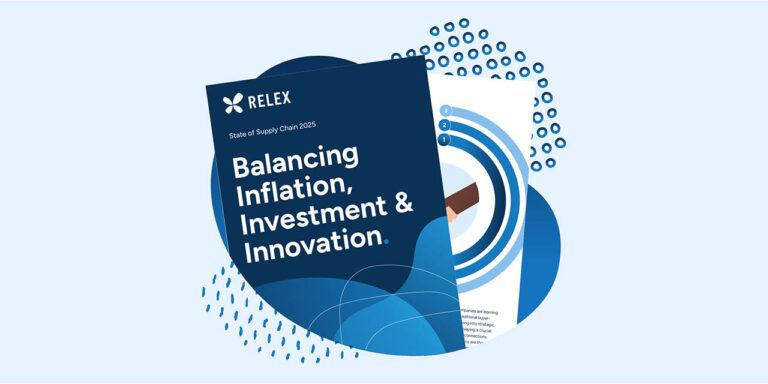RELEX’s retail trend predictions for 2020
Jan 30, 2020 • 4 min
Our CEO Mikko recently published a series of posts about what we at RELEX call the age of Living Retail. In his first post, he explained that Living Retail is best characterized by the idea of “change as the only constant.” To quote him directly, “watershed moments are important, of course, but they’re not really the whole picture — because change is happening even in the unpublicized moments. It’s happening in increments. It’s happening every day, on an on-going basis.”
In that light, it might seem silly to try to predict the trends that will dominate the retail landscape in 2020. But it’s all we think about at RELEX, and we can’t help ourselves from trying! Just as we did in 2019, let’s take a look at what we think is coming down the pike in the year ahead of us.
An Increased Focus on Sustainability
As evidence of climate change grows, so too does public outcry for sustainable practices. Across the world, we’ll see an increased focus on corporate sustainability. The benefits of retail sustainability initiatives are actually threefold:
- Obviously, they’re good for the environment.
- They create goodwill with consumers who
increasingly demand transparency and action. - They often drive operational efficiency
improvements that improve the bottom line.
Food retailers, who are responsible for 43 billion pounds of annual food waste in the United States alone, will ramp up their efforts to reduce fresh spoilage through supply chain optimization. In our experience, retailers who optimize their fresh forecasting can reduce spoilage by up to 40% — a staggering 17.2 billion pounds of food in the US.
Online and omnichannel retailers, on the other hand, need to address a rising awareness that home delivery, in its current form, isn’t all that sustainable. Though it’s not a complete solution, more accurate demand forecasting and replenishment can make significant improvements to delivery optimization and fleet CO2 emissions — while also improving costs for retailers.
AI Will Grow Ubiquitous
There’s been a great deal of hype around AI for years now, and that won’t stop. A recent development that will gain momentum, though, is that retailers are now more educated about what AI actually means for their purposes.
Earlier this year, we shared our CFO’s story about an expense management software vendor boasting about their system’s AI capabilities. When our CFO pushed for details, the rep explained that “the system remembers which form the user used last and is able to pull that form up again when the user logs in next.” A bit underwhelming, to say the least. Indeed, a recent study concluded that 40% of European AI start-ups don’t actually use anything that could reasonably be defined as artificial intelligence.
The days of offering up AI as an unquestionable cure-all are numbered. Educated retail customers will place pressure on solution providers to provide an actual business case for AI, not just slick advertisement, interesting thought experiments, and flashy, contextless demos at trade conferences. The retail use cases for AI will focus heavily on its potential to improve operational efficiency. Retailers will embrace pragmatic AI approaches that draw from statistical modeling, optimization, simulation, and classification as well as rules and heuristics.
As more companies use AI-driven solutions to optimize retail planning, the term “AI” will lose its mystique. Very soon, we’ll stop thinking of it as futuristic or beyond our reach. AI will become so ubiquitous, we’ll see it as business as usual. This mental shift may not happen as soon as 2020, but we’re moving in that direction.
Continued Turbulence in the Retail Landscape
2019 saw several retail consolidations and bankruptcies, and the coming year will see its own share of shakeups. Disruptors like Amazon and Alibaba will continue to engage in price and fulfillment wars, putting pressure on smaller retailers to up their game when it comes to rapid fulfillment and a seamless omnichannel experience.
Retailers who want to steer well clear of consolidations and bankruptcies will inevitably have to tackle difficult supply chain challenges that demand operational change. But the technology solutions to support that change don’t necessarily require a big price tag or lengthy implementation. A new generation of best of breed point solutions integrates easily with the ERP systems that still dominate the retail landscape, enabling companies to deploy focused projects with rapid ROI. More retailers are implementing and improving in parts rather than attempting full-scale ERP overhauls that leave them vulnerable to the pace of change.
That pace of change will stay high, but retailers who prioritize agility and adaptability in their technology and planning strategies will stay resilient and relevant. Walmart and Target, for example, have adjusted to high online sales volumes by fulfilling online sales out of their existing store locations. Retail has always been a sandbox for such innovation, so we’re excited to see the disruptive strategies that will emerge in 2020.
Happier Store Associates, Happier Customers
Staffing has always been one of the largest cost centers in retail, but the competitive market will force retailers to optimize their workforce planning. Just as sustainability initiatives often drive operational efficiencies, workforce optimization will drive replenishment efficiency, employee satisfaction, and improved customer experience in 2020.
Retailers will embrace technologies that match staff workload to the tasks required in near-real time. This can be accomplished by incorporating sales projections and granular demand forecasts into shift planning. This sort of approach will help retailers improve replenishment, which in turn improves availability, reduces staff workload, and gives employees time to assist shoppers and improve in-store experience.
Many countries and most US states have legislation requiring employers to provide predictability and balance in employee work shifts. Retailers will turn to workforce optimization to extend those benefits, balancing employee workloads and improving quality of life.
2020 will be an exciting year for those of us who are passionate about retail innovation. The future will surely be full of challenges — but retailers and technology vendors will partner to ensure that any company willing to invest energy and resources in adaptable planning strategies will be able to weather any storm on the horizon.



